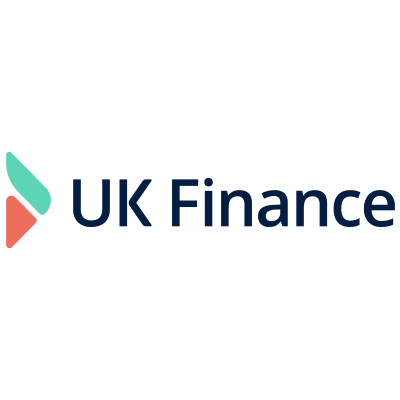6 steps to chase unpaid invoices
In this guide we will provide you with the steps you need to get your outstanding invoices paid!
If you run a business, then you know how much of a headache chasing unpaid invoices can be. There is nothing more stressful than not getting paid for the hard work you have done.

The situation doesn’t just put a financial strain on your business. It can also put a strain on you personally when you feel uncomfortable about how to correctly address the situation with your customer.
Rest assured you are not alone, a recent survey showed a shocking 55% of UK businesses still have outstanding invoices from 2022! It doesn’t seem to matter what industry you work in, those invoices just aren’t getting paid.
The fact is outstanding invoices will always happen. But there are things you can do to get the invoice paid and try to prevent future occurrences happening.
Let us guide you through.
How to chase unpaid invoices
An invoice will be classed as outstanding once the payment terms threshold has been past. If your terms stated 30 days and your customer hasn’t paid in that time, you now have an outstanding invoice.
So, how can you get your invoices paid and what’s the best way to approach the uncomfortable situation of asking for your money?
Here are some steps to help you get that outstanding invoice paid.
Step 1
Once your customer has fallen into the outstanding invoice zone, it’s time to send them a reminder. The best time to send out the first reminder is either 1 or 2 days after the due date. At this point in the process, it’s always best to keep things light and polite. It has only been a couple of days it could simply be an oversight on the part of your customer.
Dear [Client Name]
I hope this message finds you well.
This is just a quick reminder that your April invoice is now due for payment.
I have attached a copy for you [invoice number] for your reference.
Thanks again for your business and I hope to hear from you soon.
Yours sincerely
[Your name]
Step 2
If you still haven’t had payment, it might be time to consider another way to communicate with your customer. A phone call is usually the best next step. It keeps lines of communication open and can often get the issue sorted there and then. You could also suggest a meeting with the customer so you can discuss any issues and ways you can move forward together.
Step 3
If the customer still hasn’t paid the invoice, then it’s time to send out a more formal overdue invoice reminder. Be sure to include clear dates for payment and outline any fees or interest you intend to charge if the invoice remains outstanding. If the customer has various outstanding invoices, then send an account statement summery outlining all outstanding amounts and any received payments. This will give the customer a chance to see in full the amount they need to pay.
Hi [Name]
I am following up on my previous message regarding payment for invoice [invoice number] sent on [date] which still hasn’t been paid.
At [Company Name] we greatly value our partnerships with our customers, and it is our standard practice to facilitate smooth and timely settlement of all invoices to maintain great business relationships.
Since we haven’t yet received payment, I wanted to make sure that the invoice hasn’t been lost or unintentionally forgotten about. For your convenience I have attached a copy of the invoice.
As the payment is now 14 days overdue, we ask for payment to be made within [amount of days] to avoid a [x%] late payment charge being added to the bill.
We understand that sometimes circumstances arise which can cause delays in making payments and we are more than willing to address any queries or concerns you may have around settling the balance. Please contact us immediately to discuss further.
If the invoice has already been paid, please ignore this message.
Yours sincerely
[Your Name]
If you are considering charging interest or late payment fees then be sure to check that these adhere to government guidelines: Late commercial payments: charging interest and debt recovery: Interest on late commercial payments – GOV.UK (www.gov.uk)
This stage is also a good time to consider a payment extension or payment plan if your customer is struggling to pay the outstanding amount. By doing this you are showing the customer that you are understanding of their situation and helps maintain a strong relationship.
Step 4
Now is the time to send a final demand for payment. Make sure you outline all action which has been taken up to this point and what you intend to do next should the balance remain unpaid. It is important that when sending a final demand you ensure you are complying with UK law and regulations.
You can find more information here: Chase a payment – Small Business Commissioner
Dear [Name]
I am writing concerning the outstanding balance for invoice [invoice number] which was due on [date].
Despite numerous reminders, the outstanding balance of [amount] remains unpaid. We wish to bring the matter to your immediate attention as failure to address the issue promptly will leave us with no choice but to escalate this issue further.
We have made every effort to accommodate any concerns or queries regarding the invoice. However, the prolonged delay in settling the invoice has now placed a strain on our operations.
This letter is a final demand for payment. We must receive payment within [number of days]. If we do not hear from you within this time, we will forward your account to a collections agency to pursue payment.
We appreciate your urgent attention to this matter.
Sincerely
Your Name
Step 5
If all your internal efforts have failed to recover the outstanding amount, then you may wish to consider hiring an external debt collection agency. You may wish to consider the cost of using such a service and the potential impact on your customer relationship before doing so.
Step 6
Legal action is always the last step in any dispute but it may be the only option left to you if your invoice remains unpaid. Getting lawyers and courts involved can be time consuming and costly. So you will need to weigh up the costs against the outstanding amount and make a judgement on whether legal action is worthwhile.
How to ensure you keep the customer relationship strong
It’s understandable to be concerned that chasing outstanding invoices may cause tension between you and your customer. But by remaining professional and polite and keeping communication consistent and open you improve your chances of finding a resolution rather than escalating a conflict. Remember to be open and flexible about how you can work together to resolve the issue and get your invoice paid. All these things can help maintain your strong customer relationship and hopefully avoid further payment delays in the future.
Be professional > communicate > assist > be flexible.
How to prevent unpaid invoices in the future
Clear communication from the start: Be transparent about your payment terms and expectations from the off. Outline payment schedules and methods for payment in your contacts and agreements.
Timely invoicing: Make sure you are sending out your invoices as soon as you have finished the work or delivered the product. By sending out prompt invoices you are encouraging a prompt response.
Upfront collections: Depending on how your business is run you might want to consider collecting payment upfront or a deposit before you start work. This will ensure that you get your money without the risk of delays.
Friendly reminders: Once the deadline for payment is a few days off, send a polite and friendly reminder.
Be flexible: Sometimes your customers may be facing unexpected financial difficulties. If this happens be open to providing alternative payment plans and options to suit their situation.
Communicate: Regularly communicating with your customers about their experience will allow you to see any problems which may be about to arise.
Technology: Consider using customer friendly invoicing software and apps that make payment easy and fast for your customers.
It’s true unpaid invoices are incredibly stressful for any business owner. But, by setting clear expectations, being flexible and approachable you can significantly reduce the chances of those invoices sitting unpaid for weeks. If you focus on a positive approach, you will not only create great client relationships based on trust, but you will also ensure that cash flow stays consistent!
How to leverage those unpaid invoices
Did you know that unpaid invoices can actually be an asset to your business? With invoice financing you can get up to 100% of the cash tied up in your unpaid invoices in as little as 24-48hrs. It’s really that simple! If you want to learn more about how you can use those unpaid invoices to get quick cash visit Invoice Finance – Touch Financial or contact one of our experts now! Get Started – Touch Financial




